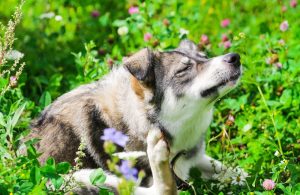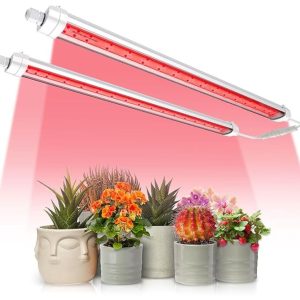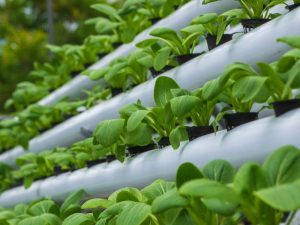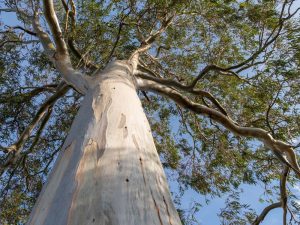Allergy flare-ups can turn outdoor playtime into a challenge for pets. Garden pollen and mold spores often trigger pet allergies like sneezing and itchy skin. You can adjust plant choices and garden design to ease symptoms. Simple swaps like replacing pollen-heavy blooms with low-allergen varieties can make a big difference. Always consult an online veterinarian if reactions persist or worsen.
Understanding Pet AllergiesTriggered in Your Garden
Contents
Garden allergens can hide in everyday blooms and leaves, causing sneezing and itching in pets. Identifying what triggers pet allergies helps you create a comfortable outdoor space and reduce allergy flare-ups.
Common Sources of Pet Allergies
Pollen from grasses, trees, and weeds often triggers sneezing and runny noses in pets. Mold spores live in damp soil and fallen leaves and can lead to itchy skin. Dust and garden debris can irritate sensitive noses and airways.
- Pollen from grasses, trees, and weeds often clings to fur and drifts in the air. It triggers sneezing and watery eyes in pets who sniff around flower beds.
- Mold spores thrive in damp soil and fallen leaves. They float on currents and can lead to itchy skin and respiratory irritation when inhaled.
- Dust and garden debris collect on paws and noses. These particles irritate sensitive airways and can cause wheezing or coughing.
- Fine particles from weeds like ragweed and nettles enter nasal passages. They can cause persistent scratching and discomfort.
- Chemical residues from fertilizers and pesticides linger on leaves. These residues can cause skin rashes and worsen breathing when pets brush against treated plants.

Seasonal Allergen Patterns
Allergens shift as the year turns. Spring brings a surge of tree and grass pollen that can overwhelm your pet’s immune system and cause constant sneezing. Summer weeds add pollen from species like lamb’s quarters and plantain, worsening pet allergies.
Autumn rain and damp leaves fuel mold growth and release harsh spores into the air. Cold winter months may bring relief from pollen but indoor heating can recirculate allergens trapped in your home. Monitoring both indoor and outdoor air quality helps you time yard work and vet consults to keep your pet comfortable.
Selecting Low-Allergen Plants
Choosing low-allergen plants reduces triggers in your garden. You’ll keep pets comfortable and free from itchy eyes. These varieties release minimal pollen and limit mold growth. They let your dogs or cats enjoy outdoors without trigger pet allergies.
Pet-safe options include colorful blooms and lush foliage. You can use them in beds, borders, and containers. They blend beauty with safety. Your pet can explore without allergy flare-ups.
- Petunias: These bright blooms produce heavy, sticky pollen that stays on the petals. Airborne grains are minimal so pets seldom react.
- Begonias: Waxy petals trap pollen and keep it off fur and noses. They thrive in shade and add color without causing sneezing.
- Zinnias: Bold, daisy-like flowers release larger pollen grains that drop quickly. Pets can enjoy the garden without breathing airborne irritants.
- African violets: These compact blooms produce tiny amounts of pollen. Their low release makes them ideal for sensitive pets.
- Orchids: Most orchid varieties hold pollen within the flower spike. They add elegance without increasing allergy risks.
- Ferns: These non-flowering plants produce no pollen at all. Their feathery fronds add lush texture and keep the air clear.
Allergy-Friendly Garden Design Strategies
Designing a garden with pet allergies in mind lowers pollen exposure and cuts mold growth. You can mix hardscaping with soft elements to reduce plant irritants. A well-planned layout keeps allergens at bay and still feels comfortingly lush.
Hardscapes and Pathways
Hardscaping cuts down on pollen sources in areas where pets play. Gravel or stone surfaces replace soil beds to limit irritants. Smooth pavers and concrete patios resist mold by eliminating damp spots.
They let you rinse trapped dust and pollen away with a hose. Raised beds from non-porous materials lift soil above ground and improve drainage. Edging around beds keeps mulch and debris out of pet zones.
Gravel pathways give pets firm footing and reduce contact with pollen. Patios near doors let you rinse paws before pets enter the house. Non-porous pavers need only occasional sweeping or hose-down to stay clear. Hardscaping adds structure, reduces allergens, and remains easy to maintain.

Enhancing Airflow
Proper airflow moves allergens out of seating and play areas. You’re spacing trees, shrubs, and hedges four feet apart to boost circulation. Prune dense foliage and clear undergrowth that traps moisture and mold.
Louvered fences or lattice screens block dust while letting air pass. Ceiling fans and outdoor fans add gentle breezes around patios. Align seating zones with prevailing winds to carry pollen away. Use open-weave fabric covers like shade sails or pergolas to allow airflow.
Raised wooden decks over planting beds open gaps for air movement. Position small fountains or misters to keep air fresh and clear dust. Regularly clear leaves and debris from surfaces and gutters to prevent blockages.
Irrigation and Drainage
Efficient irrigation prevents standing water that feeds mold spores. Drip and soaker systems deliver water directly to plant roots. These methods avoid overhead watering that leaves foliage wet.
Wet leaves can create mold-friendly environments around your garden. Set irrigation timers for early morning so plants dry by evening. Sloped beds and French drains channel excess moisture away from paths.
Proper soil amendments like compost improve drainage and soil structure. Avoid water pooling in low spots by adjusting grading. Regularly inspect lines and emitters to catch clogs before they happen. Dry soil surfaces cut down airborne spores and reduce allergy risks. Use timers and sensors to adjust watering based on weather changes.
Mulching Options
Choose inorganic mulches like crushed gravel or rubber to avoid mold. These materials shed water quickly and resist decay year-round. They reduce organic layers that trap moisture and spores.
Coarse bark chips can work in low-humidity areas when renewed seasonally. Rake out debris and add fresh mulch each spring to stop mold buildup. Lay weed fabric beneath mulch to prevent soil debris mixing with moisture. Keep mulch depth at two to three inches to balance moisture and airflow.
Avoid fine wood shavings or sawdust that can mat down and hold water. Combine stone borders with mulched beds to create clean transitions. Regularly clean the edges of mulched areas to remove fallen leaves.
Zoning Pet Play Areas
Designate pet play zones away from dense plant beds. Use gravel, artificial turf, or pea stone for clean play areas. Install low edging or fencing to keep pets from wandering into garden beds.
Place paw-washing stations at entry points for quick rinse-offs. Build raised decks or patios as shaded rest spots for pets. Cover zones with shade sails or pergolas to block falling pollen. Add durable outdoor mats that brush paws clean when pets walk over.
Position feeding and watering stations within pet zones to contain spills. Regularly remove waste and debris to prevent mold buildup. Select grass varieties with large pollen grains that drop near roots.
These additional strategies blend form and function. They help you create a lush garden that’s also safe for sensitive pets. Proper design and material choices cut down the triggers. Your outdoor space can stay beautiful and allergy-friendly all year.

Symptom Monitoring and Vet Consultation
Monitoring allergy signs lets you spot trouble early and ease symptoms before they worsen. Timely action helps your pet stay comfortable, prevents infection, and avoids long-term health issues.
Recognizing Signs of Discomfort
- Excessive scratching and licking. Pets may paw at itchy skin or rub faces on surfaces to find relief.
- Sneezing and nasal discharge. Frequent sneezes and clear fluid around the nose can indicate inhaled irritants.
- Red, swollen, or watery eyes. Eyes often become irritated when allergens are present in the air.
- Labored breathing or coughing. Wheezing or a persistent cough might signal respiratory distress.
- Lethargy and reduced appetite. Pets may lose energy and skip meals when they feel unwell.
Using Online Vet Services
Ask a question and get an answer from a verified expert veterinarian on Ask A Veterinarian when garden allergies strike. They can suggest safe over-the-counter treatments, dietary tweaks, or prescription medications. The service lets you talk to 11 verified veterinarians who are knowledgeable about all kinds of pets.
Their online diagnosis tells you how to treat your pets for allergies and to prevent it. Their services let you save money from taking your pet to the hospital.
Conclusion
Creating an allergy-friendly garden keeps your pet safe and happy outdoors. You’ll reduce sneezing and itchy skin with smart plant choices and design tweaks. Hardscaping and proper airflow make cleanup easy and mold rare. When you spot pet allergies early, you can consult an online vet for fast advice. Start redesigning your garden today and see your pet thrive without allergy worries.
Pet safety should always be your priority for your home. Check out our guide on building a pet-friendly home next!








